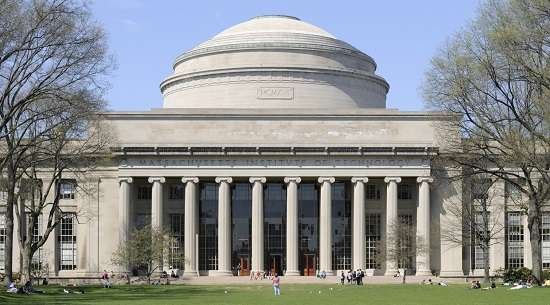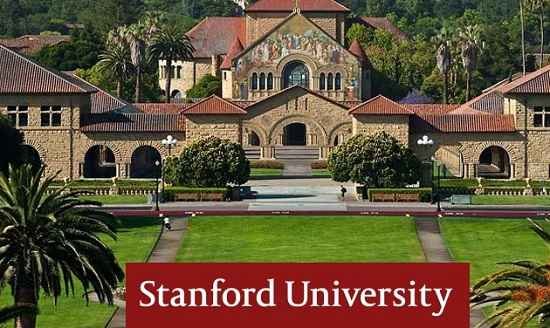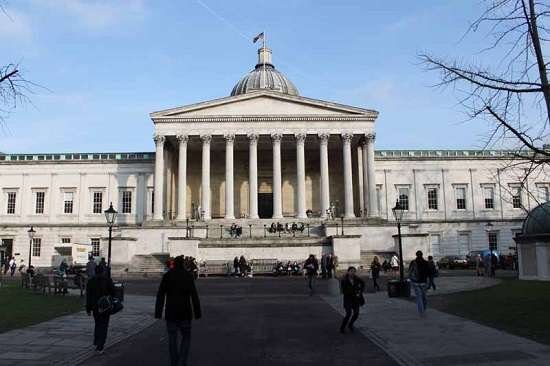3 World Universities that Open the Blockchain Research Center
Along with the rapid development of the crypto industry, public attention to this technology is increasing. At present, research and education on Blockchain has been the concern of some of the world's leading universities. Courses on crypto-based finance, Blockchain development, and Blockchain-related laws are also being developed to become serious study pathways.
Massachusetts Institute of Technology (MIT) is the first (and perhaps most famous) university to have a Blockchain development laboratory. The MIT Digital Currency Initiative Lab (MIT Digital Currency Initiative) has brought together several leading independent developers with the MIT faculty, to expand the development of applications such as Lightning Network.
advertisement
But besides MIT, it turns out there are also other world universities that open research labs for Blockchain technology. They are Stanford University and University College London. How are these leading universities involved in exploring the potential and developing Blockchain technology? Follow the story in the article below.

MIT (Massachusetts Institute of Technology)
MIT is a pioneer university in terms of Blockchain research and development. Founded in 2015, the MIT Digital Currency Initiative (DCI) program is a branch of the Media Lab owned by the university. The Blockchain development initiative from MIT works with other research centers and universities, technology industry veterans, and crypto programmers and researchers. The focus is on platform testing, research publications, and Open Source development on Blockchain technology.
The project, led by Neha Narula (member of the Global Blockhain Forum) and Joi Ito (MIT Media Lab Director) has attracted the attention of many parties, both inside and outside the MIT agency. Besides the two men, the chairman of the Obama administration's Commodity and Futures Trading Commission, Gary Gesler, also participated in this project with Simon Johnson (Former Head of the IMF).

Not only the figures above, MIT also employs Bitcoin Core developers, Wladimir van der Laan and Cory Fields, and Tadge Dryja, co-authors of the Lightning Network Whitepaper.
The Lightning Network application is just one of the many contributions that the laboratory has facilitated to enrich the Bitcoin network. This application has also helped Wladimir van der Lann's work in Bitcoin Core.
In addition to efforts with these key contributions, the Blockchain developer team from MIT also attracted media attention, especially to provide input on topics related to the crypto industry. Some time ago, Gary Gensler had discussed the security status of tokens with the New York Times, and PBS had invited Neha Narula to NewsHour for features about Bitcoin.
Stanford University
Supported by Ethereum Foundation, Protocol Labs, and Polychain Capital, Stanford University opened the Stanford Center for Blockchain Research (CBR). Basically, this research center led by Dan Boneh and David Mazieres is the culmination of a series of studies that have been conducted by Stanford academics since 2015. And Boneh stated that the establishment of CBR aims to support the Blockchain ecosystem.

We focus on a number of different areas, starting with cryptography. For me, this is very interesting because every time there is a discussion about the project, a lot of new research can be explored, "Boneh said in an interview," We are also working on a programming language for Smart Contract using a verification tool that can be approved by the protocol, "he added.
In accordance with the Bitcoin ethos which is open source access, CBR and Stanford offer artificial features for free, covering topics ranging from consensus protocols to confidential transactions. Although the works of this research come from Stanford universities, the inspiration and problems they want to solve are rooted in projects in the Blockchain industry. Therefore, they publish papers as solutions and to accommodate the aspirations of the wider community who can be directly involved in this industry.
University College London (UCL)
The Blockchain Technology Center (University College London (UCL) Technology / CBT Blockchain Center is comprehensive in its research and development approach. Unlike MIT or Stanford which focuses on technical and research incubation, UCL they make a wider network.
CBT was founded in 2015 when crypto is still not very popular. Reporting from an interview with Bitcoin Magazine, the founder and Executive Director of CBT, Paolo Tasca, stated that at that time no one really realized the hidden potential of Blockchain. This central research philosophy is built on three disciplines, namely science and technology, finance and business, as well as law and Law

advertisement
Along with the rapid development of the crypto industry, public attention to this technology is increasing. At present, research and education on Blockchain has been the concern of some of the world's leading universities. Courses on crypto-based finance, Blockchain development, and Blockchain-related laws are also being developed to become serious study pathways.
Massachusetts Institute of Technology (MIT) is the first (and perhaps most famous) university to have a Blockchain development laboratory. The MIT Digital Currency Initiative Lab (MIT Digital Currency Initiative) has brought together several leading independent developers with the MIT faculty, to expand the development of applications such as Lightning Network.
advertisement
But besides MIT, it turns out there are also other world universities that open research labs for Blockchain technology. They are Stanford University and University College London. How are these leading universities involved in exploring the potential and developing Blockchain technology? Follow the story in the article below.
MIT (Massachusetts Institute of Technology)
MIT is a pioneer university in terms of Blockchain research and development. Founded in 2015, the MIT Digital Currency Initiative (DCI) program is a branch of the Media Lab owned by the university. The Blockchain development initiative from MIT works with other research centers and universities, technology industry veterans, and crypto programmers and researchers. The focus is on platform testing, research publications, and Open Source development on Blockchain technology.
The project, led by Neha Narula (member of the Global Blockhain Forum) and Joi Ito (MIT Media Lab Director) has attracted the attention of many parties, both inside and outside the MIT agency. Besides the two men, the chairman of the Obama administration's Commodity and Futures Trading Commission, Gary Gesler, also participated in this project with Simon Johnson (Former Head of the IMF).
Not only the figures above, MIT also employs Bitcoin Core developers, Wladimir van der Laan and Cory Fields, and Tadge Dryja, co-authors of the Lightning Network Whitepaper.
The Lightning Network application is just one of the many contributions that the laboratory has facilitated to enrich the Bitcoin network. This application has also helped Wladimir van der Lann's work in Bitcoin Core.
In addition to efforts with these key contributions, the Blockchain developer team from MIT also attracted media attention, especially to provide input on topics related to the crypto industry. Some time ago, Gary Gensler had discussed the security status of tokens with the New York Times, and PBS had invited Neha Narula to NewsHour for features about Bitcoin.
Stanford University
Supported by Ethereum Foundation, Protocol Labs, and Polychain Capital, Stanford University opened the Stanford Center for Blockchain Research (CBR). Basically, this research center led by Dan Boneh and David Mazieres is the culmination of a series of studies that have been conducted by Stanford academics since 2015. And Boneh stated that the establishment of CBR aims to support the Blockchain ecosystem.
"We focus on a number of different areas, starting with cryptography. For me, this is very interesting because every time there is a discussion about the project, a lot of new research can be explored," Boneh said in an interview, "We are also working on programming languages for Smart The contract uses a verification tool that can be approved by the protocol, "he added.
In accordance with the Bitcoin ethos which is open source access, CBR and Stanford offer artificial features for free, covering topics ranging from consensus protocols to confidential transactions. Although the works of this research come from Stanford universities, inspire